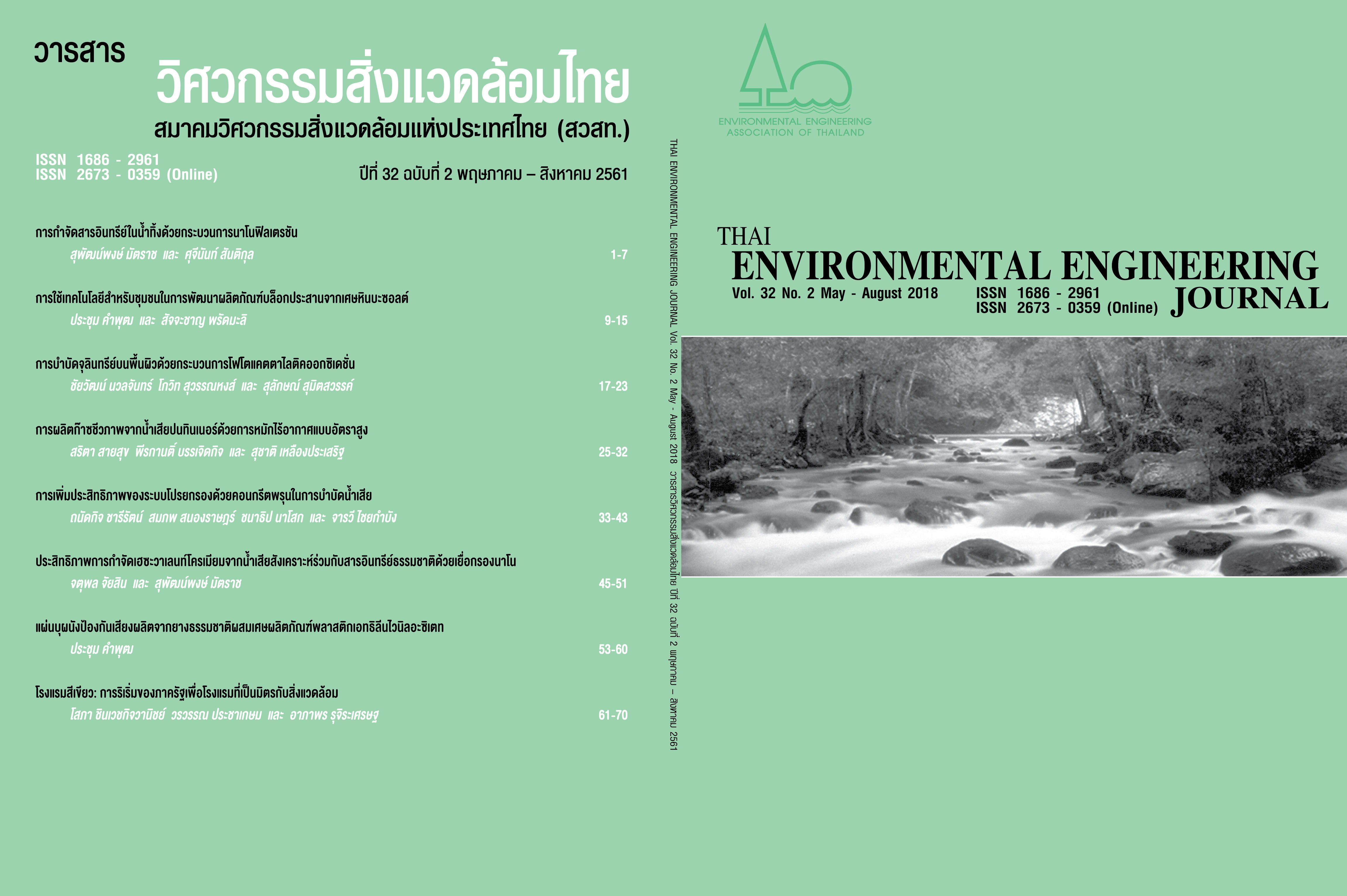Antimicrobial Surface by Photocatalytic Oxidation
Main Article Content
Abstract
Contacting of some microorganisms contaminated on the surface could cause illness to human and lead to the use of antibiotic drugs. Misusing of antibiotics can cause of drug resistant bacteria which needs more antibiotic dosage or new drugs and lead to ineffective treatment and extra costs. Health Systems Research Institute indicated that a top-infecting microorganism is E.Coli, which is a gram-negative organism. Most infections are Gram-negative bacteria, which often cause gastrointestinal illness. urinary tract and gall bladder. In order to reduce the incidence of infection on exposed microorganisms, this study had devised a method for treating microorganisms on the surface with photocatalytic oxidation using titanium dioxide (TiO2) doped with copper and embed in low density polyethylene (TiO2/LDPE)
Generally, surface microbial therapy is photolysis process. In contrast, photocatalytic oxidation is usually applied in pollutants degradation. In previous work, TiO2/LDPE films were used to treat gaseous toluene, color and organic compounds in water effectively.
In this study, TiO2 doped with 3% copper oxide were embedded on LDPE film and employed as the photocatalyst. UV light and visible light were used and compared the effectiveness of photocalytic activity to inhibit the growth of E.Coli in test tubes. The results showed that microorganisms were beginning to die and decreased with time of exposure at 120 minutes and 220 minutes, under UV and visible light irradiation, respectively. Photocatalysis reaction under UV light decreased 78% and 40% under LED light. The results indicate the possibility of applying TiO2/LDPE + Cu3% film to the contact surface such as bedside panel or working table in the hospital/clinic to reduce the incident of bacterial contamination and drug resistant bacteria.
Article Details
References
[2] Health Systems Research Institute. 2015. Thailand Antimicrobial Resistance Containment and Prevention Program. 1, 9. (in Thai)
[3] Lumyai Premchit, et al. 1992. Study of UV light application to control contamination in clean medicine production room of Khon Kaen hospital, Khon Kaen Hospital Medical Journal. 1: 41-43. (in Thai)
[4] Klanarong Intawong. 2015. Study of TiO2/LDPE film on gaseous toluene degradation by photocatalytic oxidation, Master degree thesis. 1: 61-81. (in Thai)
[5] Sasicha Chansu, et al. 2014. Synthesis of CuO2-TiO2 photocatalysts and their photocatalytic properties, Veridian E-Journal Science and Technology Silpakorn University. 3: 53-67. (in Thai)
[6] Lek Sikong, et al. 2010. Photocatalytic Activity and Antibacterial Behavior of Fe3+-Doped TiO2/SnO2 Nanoparticles. Energy Research Journal. 1: 120-125.
[7] Angelina Stoyanova, et al., 2013. Photocatalytic and antibacterial activity of Fe-doped TiO2 nanoparticles prepared by nonhydrolytic sol-gel method. Bulg. Chem. Commun. 45: 497-504.

